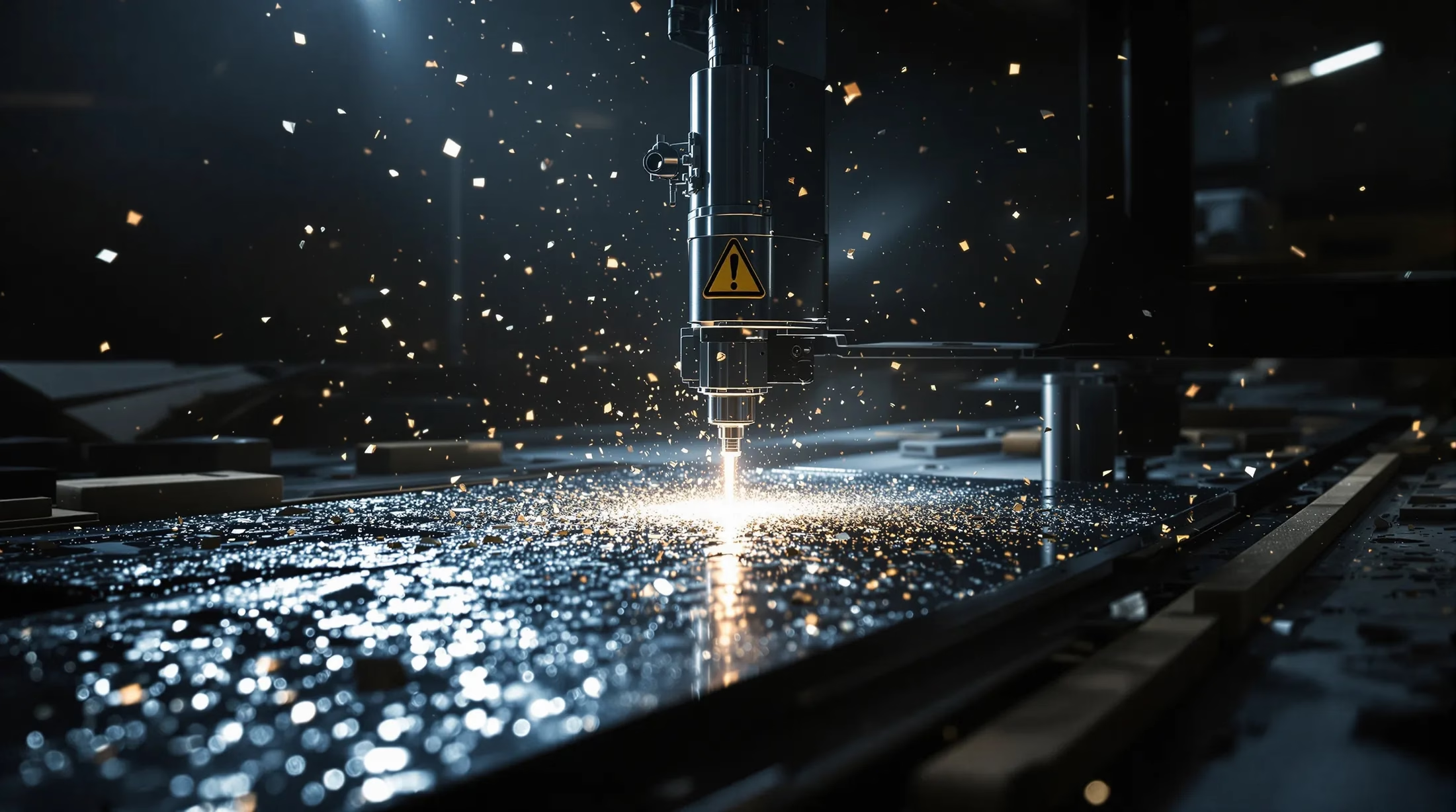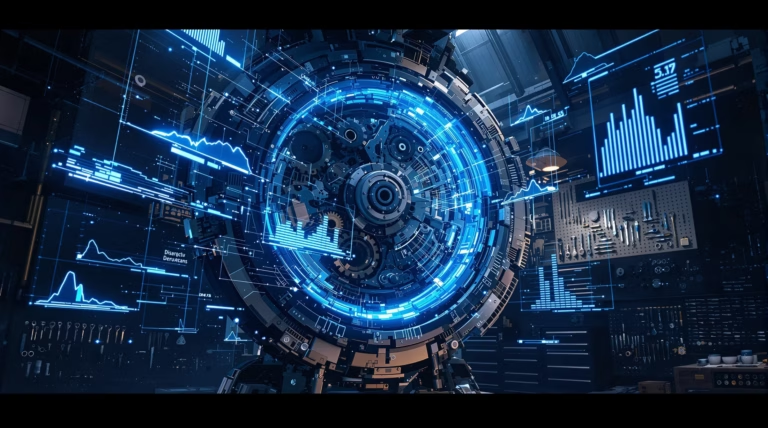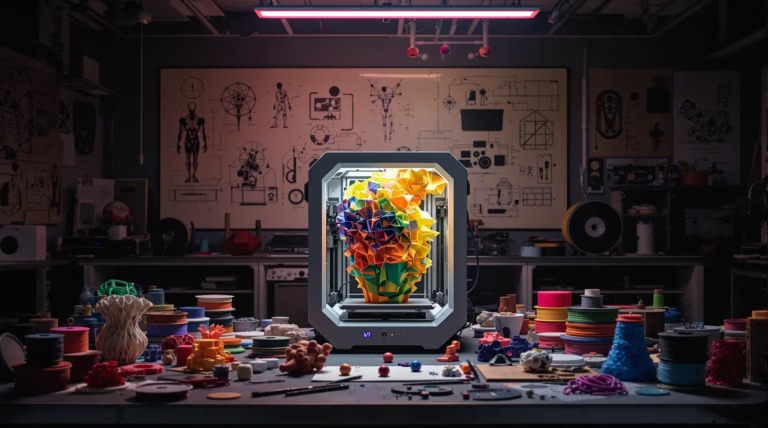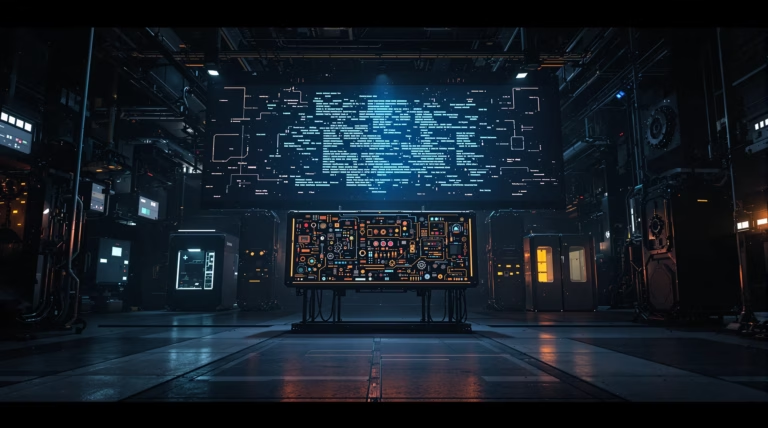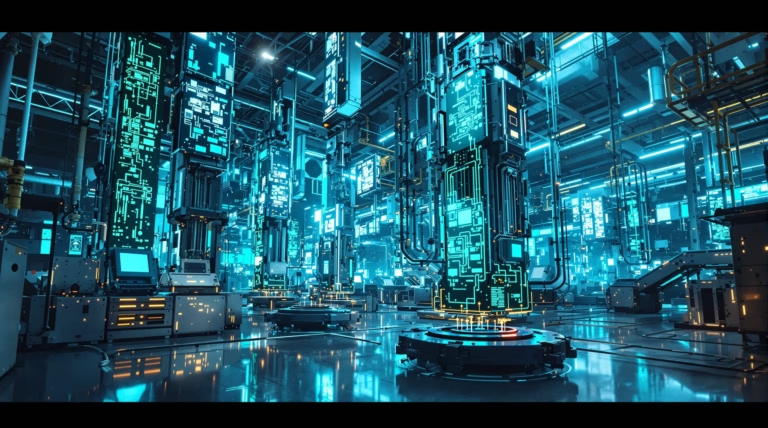Laser Cutting: A Comprehensive Guide to Techniques and Applications
Discover the revolutionary world of laser cutting technology, where precision meets innovation in modern manufacturing. This comprehensive guide explores the intricate details of laser cutting systems, their evolution, and their transformative impact across industries.
Understanding Laser Cutting: An Overview
Laser cutting represents one of the most precise manufacturing technologies available today. This advanced process utilizes a highly focused beam of light to cut through various materials with exceptional accuracy. Unlike traditional cutting methods that rely on physical contact, laser cutting delivers clean edges and intricate details through a non-contact, thermal-based technique.
The process concentrates light energy to generate heat that melts, burns, or vaporizes material along a specific path, creating precise cuts with minimal waste. This technology has revolutionized manufacturing by enabling rapid production of complex components with tight tolerances and consistent quality.
What is Laser Cutting?
Laser cutting is a subtractive manufacturing process that employs a concentrated light beam for precise material cutting. The technology focuses a high-powered laser through specialized optics onto a targeted area, creating a focused spot as small as 0.32 mm in diameter. Key specifications include:
- Minimum kerf width – 0.10 mm (0.004 inches)
- Pierce time for 12.7 mm stainless steel – 5-15 seconds
- Computer-programmed cutting paths
- Compatible materials – metals, wood, paper, acrylics, and composites
History and Evolution of Laser Cutting
The journey of laser cutting technology spans several decades of innovation:
| Year | Milestone |
|---|---|
| 1960 | First working laser invented by Theodore Maiman at Hughes Research Laboratories |
| 1965 | First industrial application for drilling diamond dies at Western Electric |
| 1967 | Development of first laser cutting machine for steel |
| 1970s | Introduction of commercial laser cutting systems for aerospace |
| 1980s-Present | Advanced developments in power, precision, and automation capabilities |
Types of Laser Cutting Technologies
Modern laser cutting encompasses primarily CO2 and fiber laser systems, each engineered for specific applications. These technologies transform light energy into intense heat for precise material cutting, with selection criteria based on material compatibility, required precision, and production volume.
CO2 Laser Cutting: Features and Applications
CO2 laser cutting technology operates at 10.6 micrometers wavelength in the infrared spectrum, offering exceptional versatility. System characteristics include:
- Power consumption: 25W to 120W for standard applications
- Kerf width: 0.1mm to 0.2mm
- Dual functionality: cutting and rastering capabilities
- Optimal for non-metallic materials: paper, cardboard, wood, acrylic, leather, and felt
- Primary applications: signage, woodworking, packaging, textiles, and architectural modeling
Fiber Laser Cutting: Advantages and Uses
Fiber laser technology represents the pinnacle of modern laser cutting systems, utilizing solid-state lasers with rare-earth-doped optical fibers. These advanced systems deliver impressive power outputs across a spectrum:
- Entry-level machines – 1kW output
- Advanced industrial systems – up to 12kW output
- Energy efficiency – 3-4x higher than CO2 systems
- Kerf width precision – 0.1mm or less
- Cutting speed – up to 3x faster than CO2 for thin metals
The technology excels in processing highly reflective materials like copper, brass, and aluminum that traditionally challenge CO2 systems. Their solid-state design eliminates the need for optical alignment and lamp replacement, significantly reducing maintenance requirements.
Materials Suitable for Laser Cutting
Laser cutting technology demonstrates remarkable versatility, accommodating over 450 different materials. These engineered materials feature consistent internal structures and density, ensuring manufactured parts maintain predictable weight, tensile strength, and center of mass specifications across production runs.
Metals and Alloys
| Material Type | Properties | Common Applications |
|---|---|---|
| Stainless Steel (304, 316) | Excellent corrosion resistance | Industrial equipment, medical devices |
| Aluminum (5052-H32) | High strength-to-weight ratio | Aerospace, automotive components |
| PCM Brass | Good machinability | Precision components |
| Titanium | Superior strength | Medical implants, aerospace |
Plastics and Composites
Laser cutting achieves exceptional results with plastics and composite materials. Acrylic, available in clear, red, black, and neon orange varieties, produces polished edges requiring no additional finishing. White Delrin (acetal) offers superior mechanical properties for functional components, while specialized materials like Grey Polarizing Film serve optical applications.
- Acrylic – multiple colors, polished edges
- White Delrin – excellent mechanical properties
- Polyurethane foam – cushioning and insulation
- Black silicone – gaskets and electronic seals
- Composite materials – engineered performance characteristics
Wood and Other Natural Materials
Natural materials respond exceptionally well to laser cutting, enabling intricate patterns and detailed components with tolerances as tight as 0.1mm. Amber bamboo plywood offers sustainable options for architectural models and eco-friendly products. The technology effectively processes various materials:
- Cardboard – clean cuts for packaging prototypes
- Felt – precise edges for textile applications
- Leather – detailed work for custom goods
- Paper – intricate designs without material damage
- Wood varieties – minimal charring with proper settings
Applications of Laser Cutting in Various Industries
Laser cutting technology has transformed manufacturing processes through its exceptional precision, versatility, and efficiency. This non-contact cutting method delivers consistent results with minimal material waste, making it essential for both prototyping and mass production. The technology’s capability to process diverse materials has significantly expanded its applications across industries.
Modern laser cutting systems integrate with CAD/CAM software, enabling seamless translation of digital designs into physical components. Key advantages over traditional cutting methods include:
- Superior cut quality with minimal burring
- Faster processing times and higher throughput
- Ability to create intricate designs
- Reduced material waste
- Minimal post-processing requirements
Automotive and Aerospace
| Industry | Applications | Key Benefits |
|---|---|---|
| Automotive | Chassis components, interior panels, airbag parts | ±0.1mm tolerance, minimal post-processing |
| Aerospace | Wing components, control surfaces, engine parts | Weight optimization, high precision, material versatility |
Electronics and Consumer Goods
In electronics manufacturing, laser cutting achieves tolerances as tight as 0.05mm, essential for:
- Electronic device enclosures
- Circuit board stencils
- Component mounts
- Protective faceplates with integrated engravings
- Custom device housings
The consumer goods sector leverages laser cutting for product differentiation through unique aesthetic features, enabling rapid prototyping and efficient scaling of production. This technology proves particularly valuable in markets with short product lifecycles and evolving consumer preferences.
Medical and Healthcare
Medical applications demand the highest precision and biocompatibility standards. Laser cutting excels in producing:
- Surgical instruments with microscopic features (25 microns)
- Implantable devices and stents
- Heart valve frames and bone screws
- Customized prosthetics and orthotics
- Patient-specific surgical guides
Laser Cutting Services and Prototyping
Professional laser cutting services offer comprehensive manufacturing solutions that significantly reduce production time and costs. These services typically include:
- High-precision cutting operations
- Deburring and edge finishing
- Three-dimensional forming and bending
- Surface finishing with powder coating
- PEM hardware installation
- Quality control and inspection
This integrated approach enables clients to streamline their supply chain by sourcing multiple manufacturing processes from a single provider, optimizing project timelines and reducing logistics complexity.
Safety and Best Practices in Laser Cutting
Laser cutting, while highly efficient and precise, requires strict adherence to safety protocols due to its concentrated energy output. Operating these sophisticated systems demands thorough understanding of potential hazards, including light radiation, heat generation, and fume production. Proper safety implementation not only safeguards operators but ensures optimal equipment performance and product quality.
Design optimization and material handling techniques form crucial best practices in laser cutting operations. A critical rule includes maintaining minimum one-eighth inch spacing between parallel cuts to prevent material degradation from heat concentration. This spacing becomes particularly vital when working with thermally sensitive materials prone to warping, melting, or ignition.
Safety Guidelines and Training
- Mandatory operator certification and training on beam hazards, electrical safety, and emergency procedures
- Laser-rated eye protection specific to equipment wavelength
- Engineering controls including enclosed cutting systems and interlocked access panels
- Automatic beam shutoffs for accident prevention
- Specialized ventilation and filtration systems for fume extraction
- Regular maintenance schedules and air quality monitoring
- Documented standard operating procedures (SOPs) for machine operations
Common Mistakes and How to Avoid Them
| Common Error | Impact | Prevention Method |
|---|---|---|
| Insufficient feature thickness | Component warping or destruction | Match feature thickness to material thickness |
| Incorrect kerf compensation | Dimensional inaccuracies | Proper CAD file preparation with kerf allowance |
| Improper material selection | Equipment damage, poor cut quality | Material compatibility testing and verification |
| Incorrect focus settings | Reduced cut quality and precision | Regular calibration and parameter verification |
Quality control checkpoints throughout the process help identify potential issues before they affect production runs. This proactive approach, combined with comprehensive material testing and parameter development, significantly reduces waste and improves operational efficiency.
Software and Tools for Laser Cutting
The efficiency and precision of laser cutting technology are significantly enhanced by specialized software applications that bridge the gap between digital designs and physical production. Much like an inkjet printer, laser cutters rely on specific drivers to translate computer designs into machine-readable instructions. These software solutions not only control the cutting parameters but also optimize the entire workflow from design to fabrication, reducing material waste and maximizing productivity.
Software-driven manufacturing has revolutionized the laser cutting process by automating complex production aspects. Modern laser cutting software ensures parts are designed with manufacturability in mind, verifies geometry accuracy, and generates necessary toolpaths and cutting instructions. This digital ecosystem enables consistent quality across production runs while providing flexibility to quickly adapt designs based on changing requirements.
Design Software Compatibility
- Adobe Illustrator – robust vector-based design capabilities with direct export options
- CorelDRAW – comprehensive support for laser cutting applications
- AutoCAD – precise technical drawing and vector creation tools
- Autodesk 123D Make – specialized for converting 3D models into laser-cuttable 2D components
- 3D modeling programs with integrated 2D export modules
File Formats and Preparation
| Technical Factor | Consideration |
|---|---|
| Vector Formats | SVG, AI, DXF, EPS for clean, scalable cuts |
| Kerf Width | Material removal by laser beam must be factored into design |
| Tolerances | 0.1mm to 0.3mm for press-fit connections |
| Color Coding | Different colors assign varying laser parameters for cutting/engraving |
File optimization strategies significantly impact production efficiency and final quality. Nesting software automatically arranges multiple parts to maximize material utilization, while proper design sequencing minimizes machine head travel time. For complex assemblies, designers must incorporate appropriate tolerances based on material characteristics and thickness.
Finishing Services and Post-Processing
Laser cutting delivers precise components with clean edges, yet many applications require additional finishing processes to achieve desired functional and aesthetic qualities. These secondary processes enhance corrosion resistance, improve wear properties, modify appearance, and prepare surfaces for assembly steps.
Anodizing and Polishing
- Type I Anodizing – basic protective oxide layer
- Type II Anodizing – decorative finish with moderate protection
- Type III Anodizing – hard coating for maximum wear resistance
- Mechanical Polishing – removes surface irregularities
- Surface Enhancement – improves substrate preparation for subsequent treatments
- Contamination Prevention – creates surfaces resistant to particle accumulation
Polishing services transform matte laser-cut surfaces into smoothly reflective finishes with reduced friction characteristics. This process is particularly valuable in medical, food processing, and consumer goods industries, where surface quality affects both functionality and aesthetics. When combined with subsequent plating or coating operations, polished surfaces provide optimal substrate conditions for superior finish adhesion and appearance.
Deburring and Plating
Deburring is a critical post-processing step that removes sharp edges and burrs created during laser cutting operations. These microscopic imperfections can impact component quality and safety in multiple ways:
- Create potential safety hazards during handling
- Interfere with precise assembly processes
- Form stress concentration points leading to premature failure
- Prevent components from seating correctly in assemblies
- Compromise overall part quality and performance
Professional deburring services utilize various techniques to achieve smooth, consistent edge quality:
- Tumbling – for batch processing of smaller components
- Vibratory finishing – ideal for complex geometries
- Thermal deburring – suitable for hard-to-reach areas
- Manual operations – for precision requirements
| Plating Type | Primary Benefits |
|---|---|
| Zinc | Superior corrosion protection |
| Nickel | Enhanced wear resistance and dimensional stability |
| Copper | Improved electrical conductivity |
| Gold/Silver | Specialized electronic applications |
Metal plating processes deposit thin metal layers through electroplating, electroless plating, or mechanical plating methods. This enhancement is particularly crucial in aerospace, automotive, and electronics manufacturing, where plated components exhibit extended lifespans while maintaining minimal weight and dimensional changes. The process adds specialized surface properties including increased conductivity, corrosion resistance, solderability, and aesthetic appeal.

